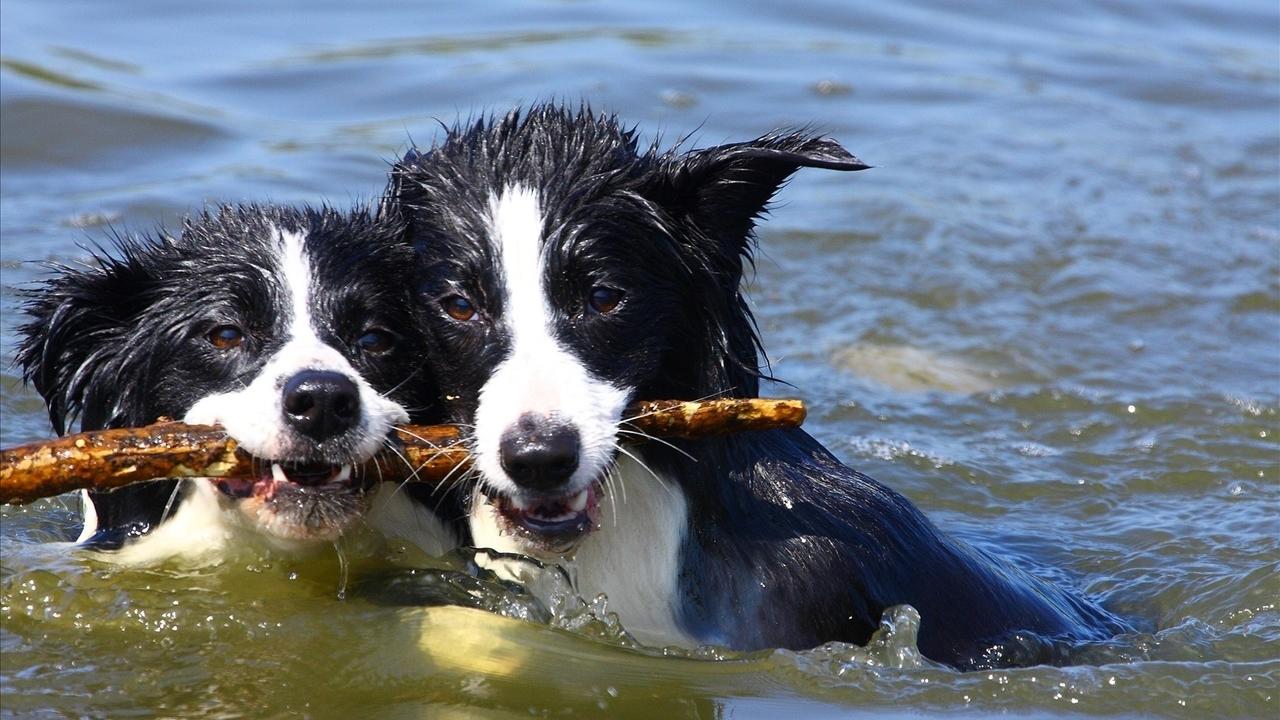Active Recovery or Rest Days in Your Dog's Fitness Training

Every dog needs a little R and R, right? This can be a confusing topic for those whose dogs train and compete in canine sports.
What exactly does a rest day entail for your dog as a canine athlete? What can your dog do or not do on that day? Why does your dog need it? Is a rest day different from a recovery day?
The Active Rest Day
A rest day is a day that your dog uses to physically and mentally recharge. It is a full day off, not just a few hours or an evening. Your dog's body will use this time to repair tissues.
A rest day is ideally an ACTIVE rest day in that your dog will maintain some degree of activity instead of just lounging all day. Active rest days are more accurately called active recovery days in the context of canine fitness and sports.
Benefits of An Active Recovery Day
Without effective active recovery days, all the rewards and benefits of fitness training can be negated. There are specific physiologic benefits to an active recovery day.
Active recovery days allow your dog's body time to flush out toxins and reduce lactic acid buildup. This helps your dog's muscles feel less fatigued. Active recovery will increase blood flow helping to keep your dog flexible and reduce delayed onset muscle soreness. Active recovery days also help you maintain consistency with your dog's fitness routine.
Intense workouts also tax or stress the nervous system. On recovery days, the fight or flight response (sympathetic nervous system) is decreased. The parasympathetic system, or calming, system is stimulated. Cortisol levels drop. Physiologic stress lowers and the body can fully relax. Muscles are rebuilt, energy stores are replenished, support structures are strengthened.
When your dog’s body does not have sufficient time to repair and rebuild, your dog will actually experience a decrease in power, strength, speed, and endurance instead of an increase. Over time this leads to an increased risk of an injury due to overtraining.
What NOT to Do on Active Recovery Days
On active recovery days, your dog can perform any functional activity of daily living, but shouldn’t participate in any vigorous activity that will greatly increase heart rate or breathing, or really get the blood pumping for any significant amount of time.
Additionally, your dog should not do any intensely "mental" or stressful activity on an active recovery day. Mental rest is just as important as physical rest as mental stress still triggers a physiologic response that can include fight or flight. Active rest days are meant to be mentally relaxing as well.
Although rest is important, the WORST thing your dog can do is NOTHING. This kind of rest day, called a passive rest day, involves inactivity. This type of rest day might be indicated if your dog is injured, in pain (not general soreness), or exhausted. Otherwise, a passive rest day that involves doing nothing more than lounging all day can actually make your dog feel worse by creating increased soreness and stiffness.
What to Do on Active Recovery Days
An active rest day should still involve movement. Your dog’s body, and mind, need some stimulation every day.
The overall intensity of the activity should be no more than about 60% of your maximum effort canine activity. And the activity should be pleasurable to your dog so that your dog does not feel stressed by participating in it.
These types of activities may include things like:
- mild-moderate hiking
- steady state walking or trotting
- low intensity, leisurely swimming
- dynamic stretching
Remember that increasing respiration and heart rate to a level just above normal and challenging your dog’s range of motion are generally good things to do. Fun activities that are not super intense, physically or mentally, are also appropriate.
Active Recovery versus Light Workout Day
An active recovery day is not the same as a light workout day.
On light workout days, your dog will still do fitness training, and/or sport specific skill training, with clear goals - just at a lower intensity than other workouts. Low intensity workouts should alternate with high intensity workouts.
Low intensity workout days are similar to active recovery days in that they allow developments to occur in your dog’s body, but the training goal for an active recovery day is simply recovery.
An appropriate use of light workout days facilitates the more intense training days and will actually reduce the need for active rest days.
Frequency of Active Recovery Days
Every dog is different in how often they need an active recovery day.
If your dog is new to fitness or not used to being active (deconditioned) then your dog may need one after every workout.
For the dog who is generally active already, the recommendation is one active rest day a week.
If your dog is an experienced athlete and uses light workouts appropriately mixed with high intensity workouts, your dog may only need an active recovery day once every 10-14 days.
Rest as a Training Variable
Rest is another training variable that you, as your dog's fitness coach, modify in response to the feedback your dog's body gives. Use more active rest days when your dog's body needs it and reduce them when indicated. Active rest days , when incorporated into your dog's fitness and sport training wisely, will improve your dog's overall fitness and conditioning.